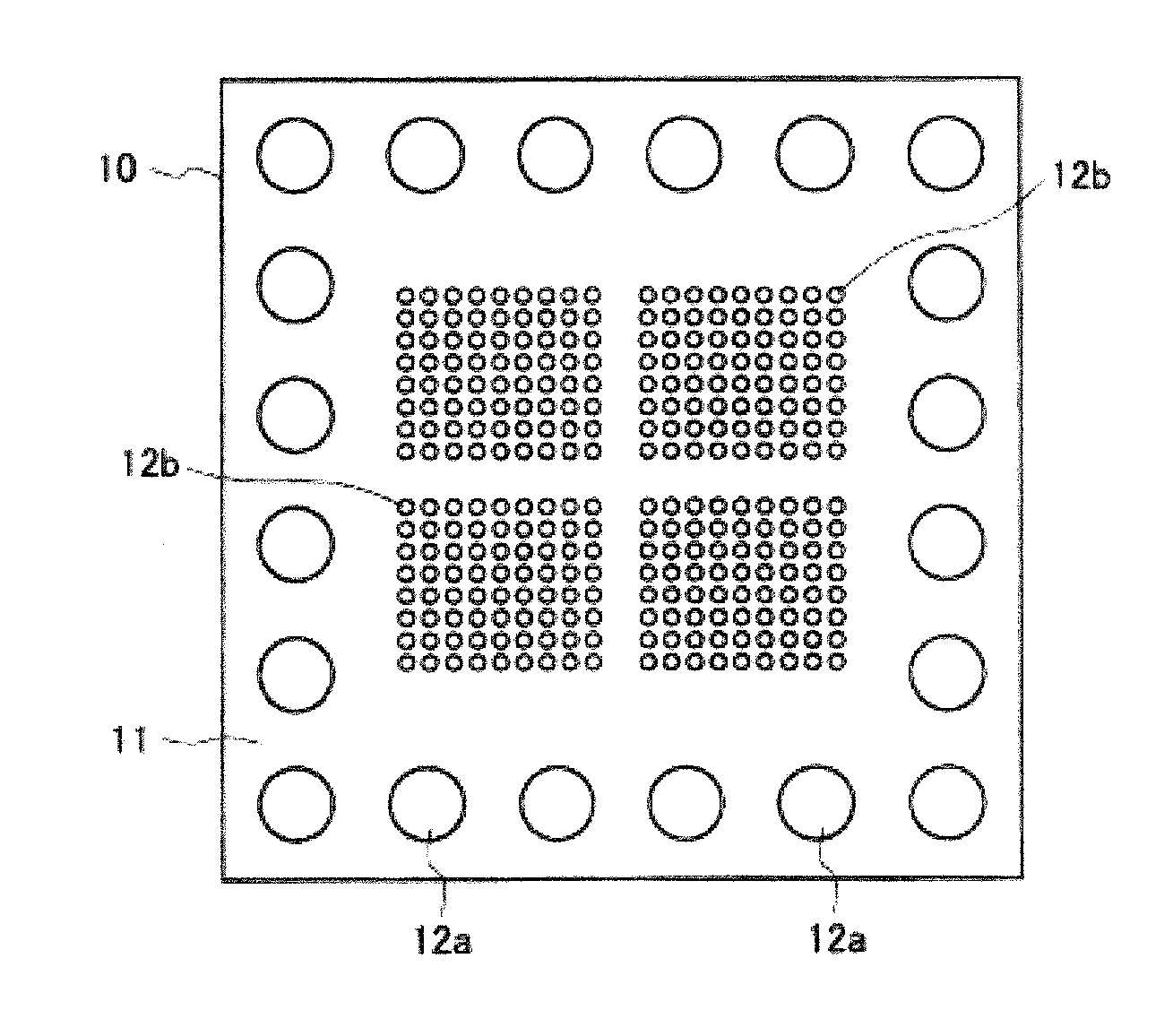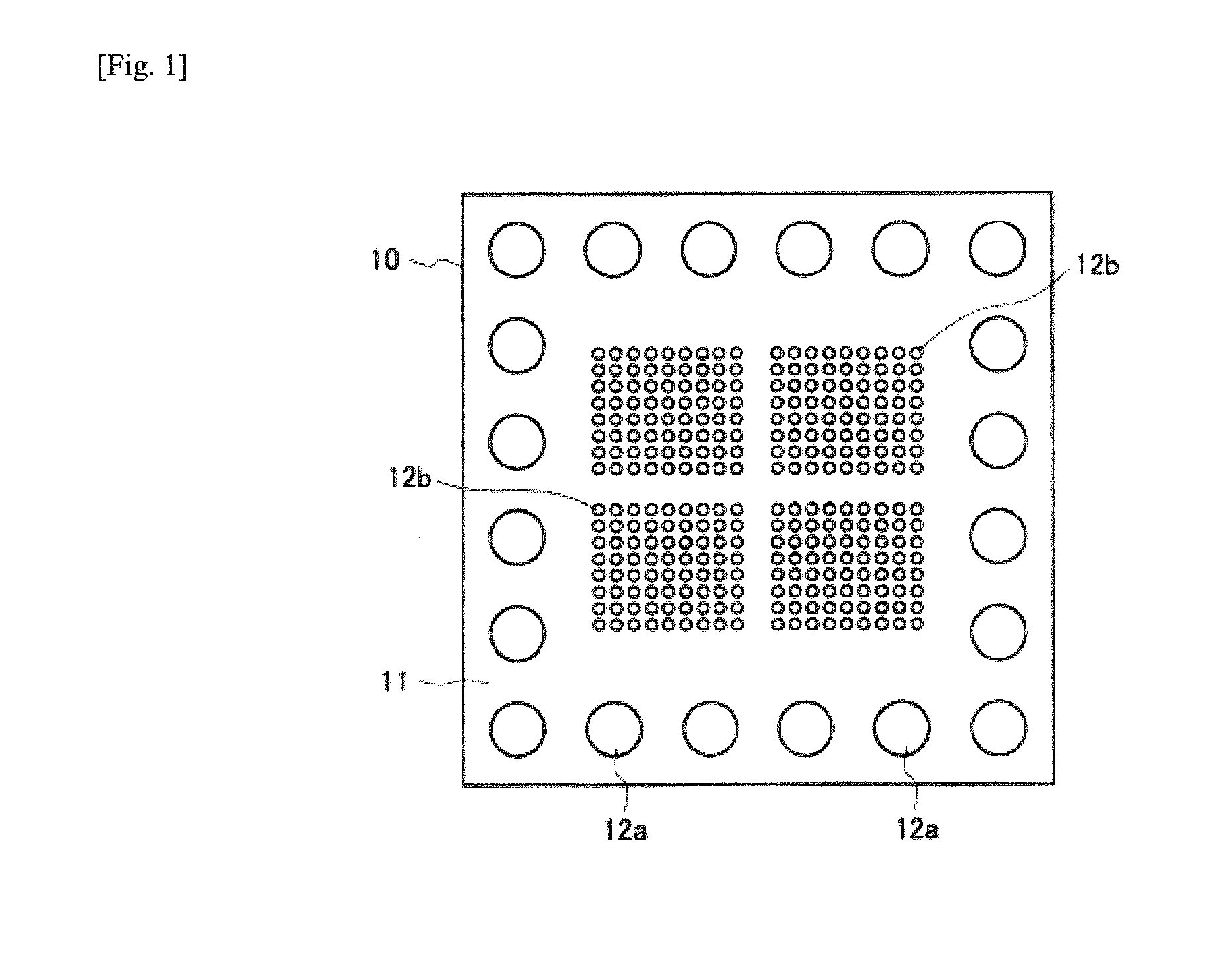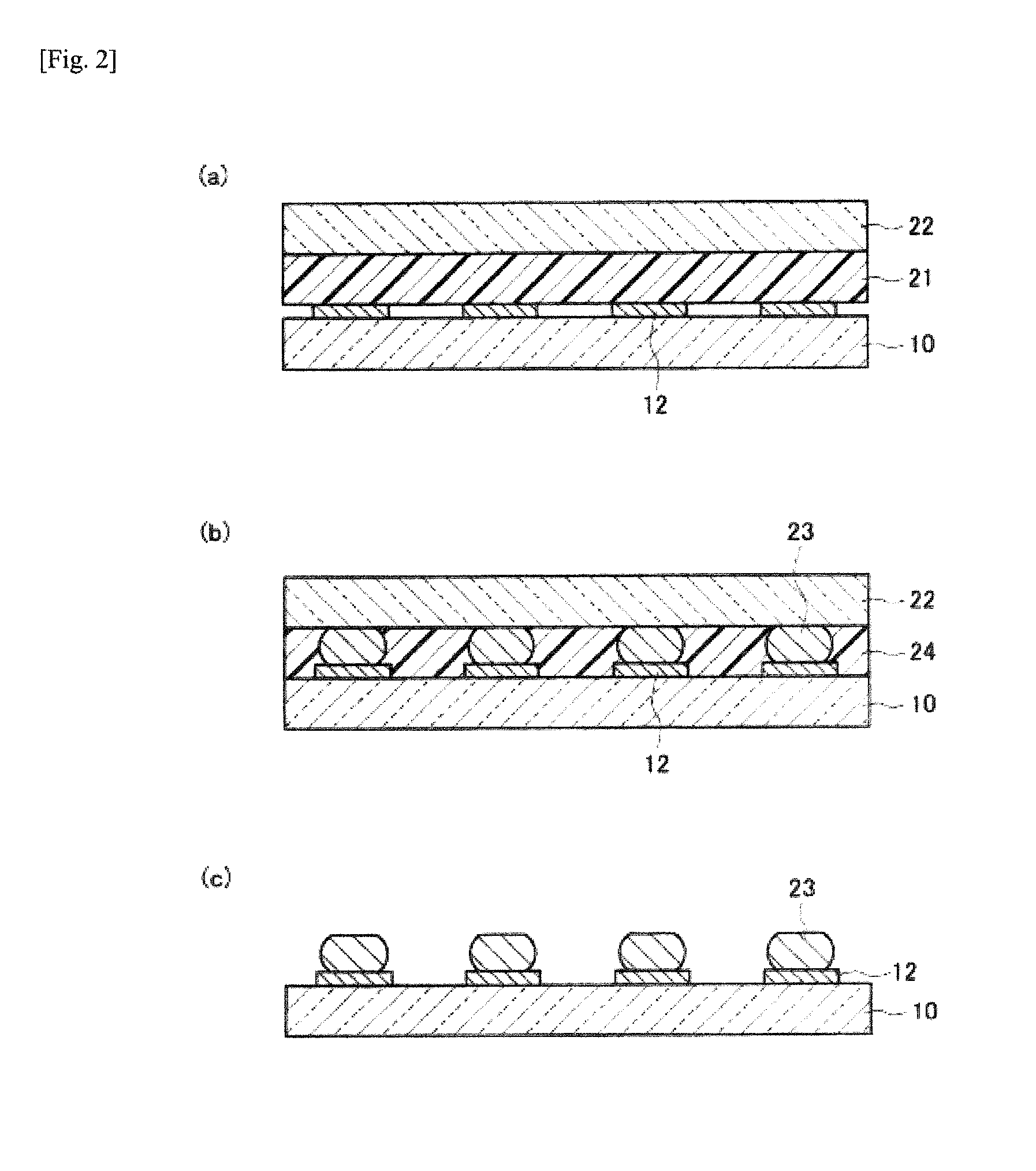Reflow film, solder bump formation method, solder joint formation method, and semiconductor device
a technology of reflow film and solder bump, which is applied in the direction of metal-working apparatus, non-electric welding apparatus, solid-state devices, etc., can solve the problems of introducing a solder ball mounting apparatus, requiring considerable capital investment, and unable to meet the requirements of these standards, etc., to achieve simple solder bump formation, excellent storage properties, and minimal voids
- Summary
- Abstract
- Description
- Claims
- Application Information
AI Technical Summary
Benefits of technology
Problems solved by technology
Method used
Image
Examples
first embodiment
Molecular Weight of Resin
[0096]In the first embodiment, the preferred molecular weight for the resin varies depending on the type of resin and the saponification degree, but for example in the case of a polyvinyl alcohol having a saponification degree of 88%, the weight-average molecular weight is preferably from 3,000 to 60,000, more preferably from 4,000 to 40,000, and still more preferably from 5,000 to 30,000. In the case of a polyvinylpyrrolidone, the weight-average molecular weight is preferably from 10,000 to 500,000, more preferably from 20,000 to 300,000, and still more preferably from 30,000 to 100,000. When the molecular weight satisfies this range, the resin exhibits more satisfactory film formability than those cases where the molecular weight is lower than this range. Further, when the molecular weight satisfies this range, because of the fluidity of the solder particles in the heating step, the solder tends to accumulate more readily on the electrodes than those cases...
second embodiment
Molecular Weight of Polyvinyl Alcohol
[0097]Of the various resins that can be used in the second embodiment, the molecular weight of the polyvinyl alcohol is preferably within the same range as that described for the polyvinyl alcohol in the first embodiment, for the same reasons as described above.
Third Embodiment
Polymerization Degree of Polyvinyl Alcohol
[0098]In the third embodiment, the preferred polymerization degree for the polyvinyl alcohol varies depending on the saponification degree of the polyvinyl alcohol, but the average polymerization degree is preferably from 100 to 1,000, more preferably from 150 to 800, still more preferably still more preferably from 200 to 700, and most preferably from 250 to 500. In general, when the average polymerization degree satisfies this range, the resin exhibits more satisfactory film formability than those cases where the polymerization degree is lower than this range. When the average polymerization degree satisfies this range, because of...
third embodiment
Saponification Degree of Polyvinyl Alcohol
[0102]The polyvinyl alcohol can be obtained by hydrolyzing the ester groups of a polyvinyl acetate obtained by an addition polymerization of vinyl acetate. The saponification degree (units: mol %) is used to indicate the degree of hydrolysis of the ester groups of the polyvinyl acetate. A high saponification degree for the polyvinyl alcohol indicates a high rate of hydrolysis of the ester groups. For example, a polyvinyl alcohol having a saponification degree of 100 mol % means that all of the ester groups in the polyvinyl acetate have been converted to hydroxyl groups. The solubility of the polyvinyl alcohol tends to improve as the saponification degree increases, but a polyvinyl alcohol with a saponification degree of 100 mol % exhibits a high level of crystallinity and is therefore difficult to dissolve. As a result, for polyvinyl alcohols of the same molecular weight, those polyvinyl alcohols for which the saponification degree is approx...
PUM
| Property | Measurement | Unit |
|---|---|---|
| Fraction | aaaaa | aaaaa |
| Fraction | aaaaa | aaaaa |
| Percent by mass | aaaaa | aaaaa |
Abstract
Description
Claims
Application Information
 Login to View More
Login to View More - R&D
- Intellectual Property
- Life Sciences
- Materials
- Tech Scout
- Unparalleled Data Quality
- Higher Quality Content
- 60% Fewer Hallucinations
Browse by: Latest US Patents, China's latest patents, Technical Efficacy Thesaurus, Application Domain, Technology Topic, Popular Technical Reports.
© 2025 PatSnap. All rights reserved.Legal|Privacy policy|Modern Slavery Act Transparency Statement|Sitemap|About US| Contact US: help@patsnap.com



